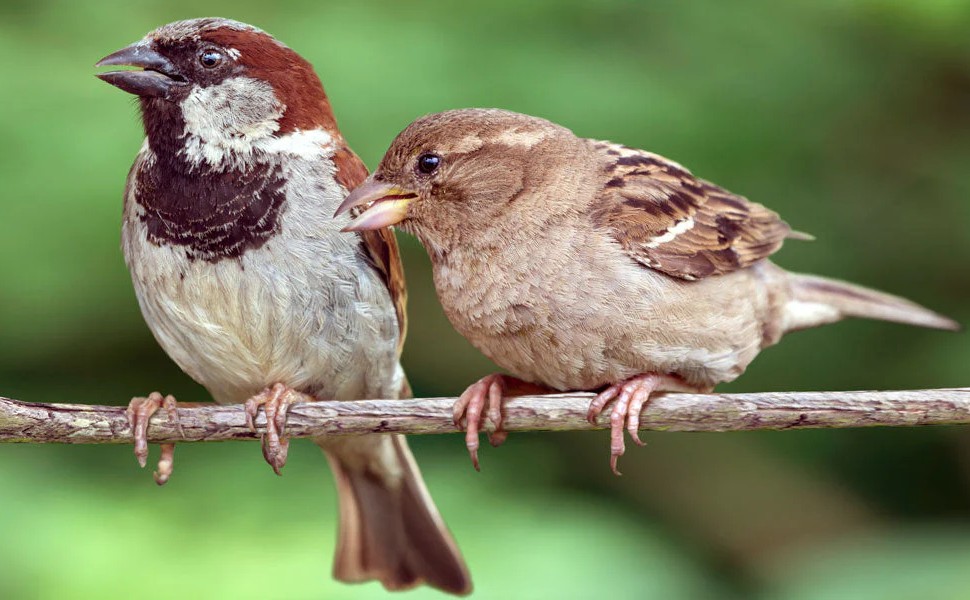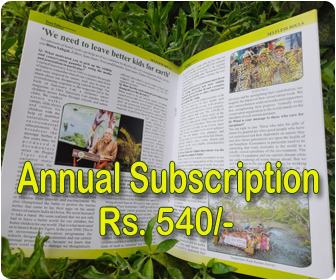Thinking Point
Sanjay Kumar
The writer is IIS, Deputy Director, Central Bureau of Communication /Press Information Bureau (PIB), Ministry of Information & Broadcasting, Govt. Of India
Many birds have disappeared from the avian world, while many others are on the verge of extinction. Vultures are hardly seen now. Crows have disappeared from many localities. The tiny sparrows in the courtyards of houses, once ubiquitous, are also a somewhat rare sight now. This is a serious situation, calling for some thought. Among the endangered birds in the world, the yellow-crested cockatoo, California condor, and northern bald ibis, a large black bird with a red face and a long, curved beak, are in danger due to a combination of many factors. Going by research, different threats are affecting the population of different wildlife species.
There are more than 10,000 species of birds on the earth, which include finches, hummingbirds, eagles, and vultures, and a whole lot of other small and large avians. Unfortunately, many of them are on the verge of extinction. Sadly, the tiny sparrow, a friend of man who chirps and twitters in the courtyards of houses, is also among them. The house sparrow has also been included in the International Union for Conservation of Nature (IUCN) Red List. Britain's 'Royal Society for Protection of Birds' puts sparrows in the 'Red List' on the basis of studies conducted by researchers in India and various other parts of the world. According to a study conducted by Andhra University, the sparrow population has decreased by about 60 to 80 percent. So, the IUCN, which monitors wildlife, included the house sparrow i.e., “House Sparrow - Passer domesticus” in the Red List of Threatened Species in 2016.
The IUCN's Red List of endangered species includes 182 species of Indian birds. They are listed under the categories of critically endangered, endangered, vulnerable, and near threatened. These species are in danger of global extinction, and their trade is banned internationally. Rapid climate change and human activities have affected and endangered more than 1 million wildlife species around the world, including sparrows. Every year on March 20, World Sparrow Day is celebrated to spread the message of conservation. Efforts are also being made worldwide to reduce threats like deforestation and climate change. But the scenario is not changing; the danger is increasing. Given the threat looming over the sparrow, the Government of India has included seven sparrow species, including the house sparrow, in Schedule II of the Wildlife Protection Act, 1972, so that it is protected. It cannot be hunted except in case of danger to human life. Permission of the Chief Wildlife Warden is required to move sparrows from one place to another (translocate).
Experts have said that the main reason one out of every eight bird species in the world, including sparrows, is facing the threat of extinction is the increase in global temperature and the continuous changes in the weather. Sparrows, crows, and mynas are birds that live closest to humans by making nests in the courtyard of their houses, but due to development, expansion, and changing lifestyles of villages/cities, they are now facing many problems in shelter, security, and food. The buildings are packed with glass, which is increasing the problem. Sparrows look at their shadows and die or get injured by colliding with them while flying. The population of sparrows is decreasing in villages, too. While villages are turning into cities, farms, barns, ponds, and orchards are being replaced by concrete jungles. The remaining greenery has been lost in the last few years to land and road widening, cemented tiles, and stone parks.
Increasing use of pesticides in agriculture, lack of food, tree felling, overexploitation of nature, increasing urbanization, pollution, changing lifestyle, climate change, etc., all contribute to the declining avian population. Natural habitats are being converted into agricultural land, or buildings are coming up. In gardens and orchards, fruit trees are being uprooted to make way for other things. Cutting down trees and forests has destroyed the habitat of sparrows and other birds. On the one hand, sparrows sit on trees around human houses, and on the other, two-thirds of bird species cannot live anywhere else except in forests. About 12 to 38 million birds are killed every year in the Mediterranean region alone. Human-induced climate change is proving to be the most serious threat to sparrows and other birds. Research shows that climate change is an emerging and persistent threat, currently affecting 33 percent of globally threatened species, and it often exacerbates existing threats. Due to these reasons, the sparrows are not being seen in villages and cities.
Fortunately, in Patna city, sparrows are seen in good numbers above and below the Ganga Path bridge built on the river Ganga outside the city. Wetlands, rivers, and ponds are the centres of food for birds. There was a time when birds like sparrows, crows, and mynas were a part of our lives, but today they have gone far away from us. Man's relationship with them has been broken. In such a situation, re-establishing a relationship with the environment should be an important part of our environmental consciousness. We will have to intensify efforts for the sparrows to return home. Arrangements for food and shelter will have to be made, and trees will have to be planted; this will prevent the temperature from rising and will also curb climate change. Humans will have to change their lifestyle, adapt the old practices in their lives.
If we cannot break the concrete jungle, then we will have to fill it with greenery. Food and water will have to be kept for sparrows in every house, and artificial nests or houses suitable for birds will have to be made during house construction. Certainly, the sparrow conservation initiative will change the picture, and along with that, conservation of sparrows will also lead to conservation of other birds.
Gharlu sparrow inhabits mud dunes of Diyara
The Diara region of Bihar is becoming a safe habitat for the house sparrow. It also has wonderful scenery. The sparrow has made its home in the mud mound of Diyara where the Ababeel bird nests, in a similar nest. While birdwatching in Harjodi, Madhepura recently, ornithologist Gyanchandra Gyani spotted the sparrow nesting in a mud mound.
The house sparrow, which normally lives and nests in the vicinity of humans, also inhabits grasslands in the Diyara region. Living in a mud hut, however, is wonderful and interesting in itself. The sparrow is thriving in its natural habitat in Diyara area of Harjodi, Madhepura. Along with sparrows, the Ganges myna, or Gangetic myna, was also seen there in large numbers. Finding large numbers of house sparrows in the wild raises questions, as well as research opportunities. A safe habitat, access to food, water from the river, and a good climate can also be important aspects of sparrow spotting in the Diyara region, away from human territory.
The decline in the sparrow population is attributed to increasing habitat crisis, pesticide use in farms, dietary deficiencies, extensive use of pesticides in farms, lifestyle changes, climate change, pollution, hunting, disease of sparrows, etc. In rural areas, the decline in the sparrow population is mainly due to changes in agricultural practices, use of pesticides, loss of winter stubble, and improved grain storage. This is depriving the sparrow of valuable food sources. In urban areas, there is evidence that fewer suitable feeding sites, fewer nesting sites, and increased predation by cats/raiders all play a role. Sparrows thrive wherever there is grain-water-habitat-tree and a balanced environment and security. Where this is not found, the sparrow is missing. Patna's Asha Prasad, who lives in an apartment, has dozens of birds, including sparrows, sheltered by a grain-water-dwelling arrangement on her small balcony.
On the Ganga Path in Patna, the sparrow can be seen on the riverside, under the bridge. It gets food, water, shelter, a balanced environment, and security. The riverbank or wetland attracts sparrows. It has a rich diet, especially insects, needed to feed the young. While the house sparrow is making the mudflats its home in the Diyara, it also lives in the grass and bushes that grow in the Diyara area. Whatever the reason, the sparrow that once lived near man has gone away, nesting even in Diyara and in remote riverbanks or farmlands.

















Leave a comment